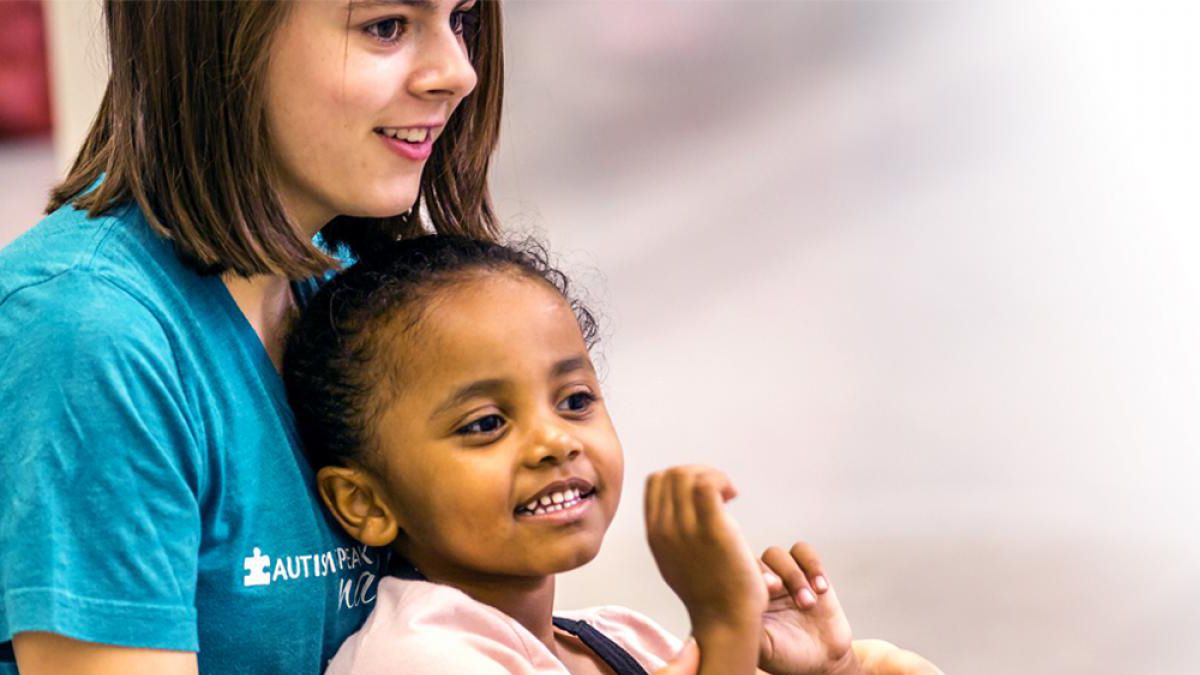It’s okay if these students don’t have perfect poise or graceful movements. In this dance class, the goal is simple: Get the kids moving and interacting, says Ohio State student Elle Pierman.
The students, who range from 6 to 9 years old, may be in different stages of their development, but they all have one thing in common. All have been diagnosed with autism spectrum disorder (ASD).
BalletMet Columbus is in its second year of this unique program developed specifically for children with ASD. Once a week, the kids gather at the dance studio where they spend the first few minutes playing in and getting used to the space before taking part in a more structured dance class. It’s a variation of BalletMet’s own “Wiggle Jig” program that began in 2009, an effort that involves going into local preschool classrooms and getting kids moving in order to improve their social, motor and cognitive learning.
Pierman, a PhD candidate, sees noticeable improvements in the students during the 10 weeks.
“One of the kids in particular had a lot of trouble focusing. He’d be running around. He’d be leaving the room and getting upset a lot. Now, his participation across the board has been amazing. His focus is better, his overall participation is better and his attention is a lot better,” Pierman says. “It’s a really cool thing to see.”
Jenn Smiechowski says her son, 6-year-old Ethan, has become more coordinated and aware of his surroundings since taking part in the class.
“It’s also helped Ethan become more capable in a group setting, in particular working and relating to other kids and with multiple instructors in a complex environment,” she says. “Overall he has become more confident and expressive.”
Other research out of Ohio State shows the powerful impact of the arts on children with ASD. Researchers focused on children who took part in the Shakespeare and Autism project, a unique collaboration involving Ohio State’s Nisonger Center, Wexner Medical Center, Department of Theatre and the Royal Shakespeare Company.
Children learned a rhythm exercise that taught them skills like imitation, observation and communication. Children who took part in the study showed improvement in their social skills and their ability to engage in social relationships.
“Occupational therapists often use creative activities such as dance, music, theater, drawing, painting and more as methods to assist those with ASD,” says Shari Savage, an assistant professor in Ohio State’s Department of Arts Administration, Education and Policy. “The visual arts offer unique opportunities for ASD individuals to express themselves in myriad ways, allowing for meaningful growth in communication and personal connection.”





